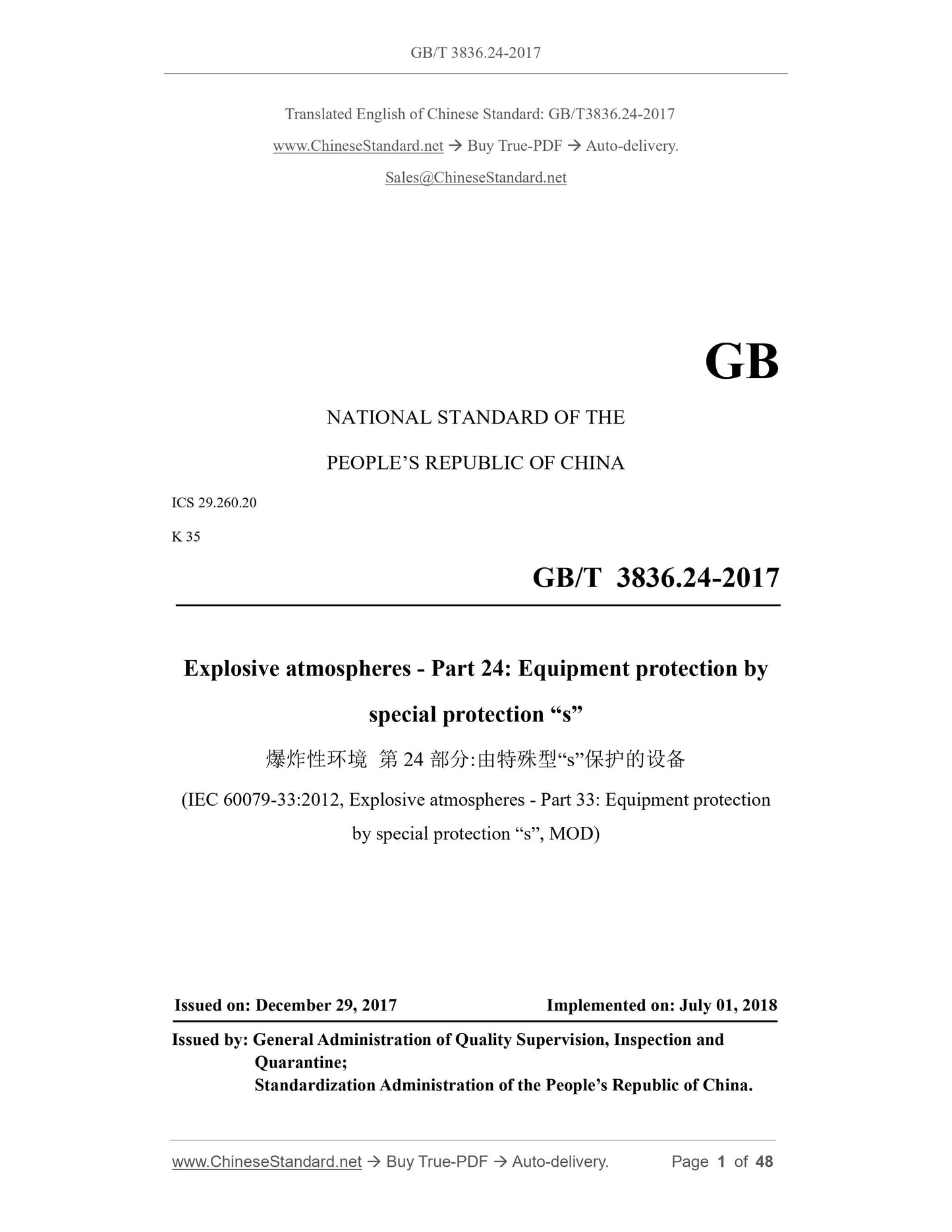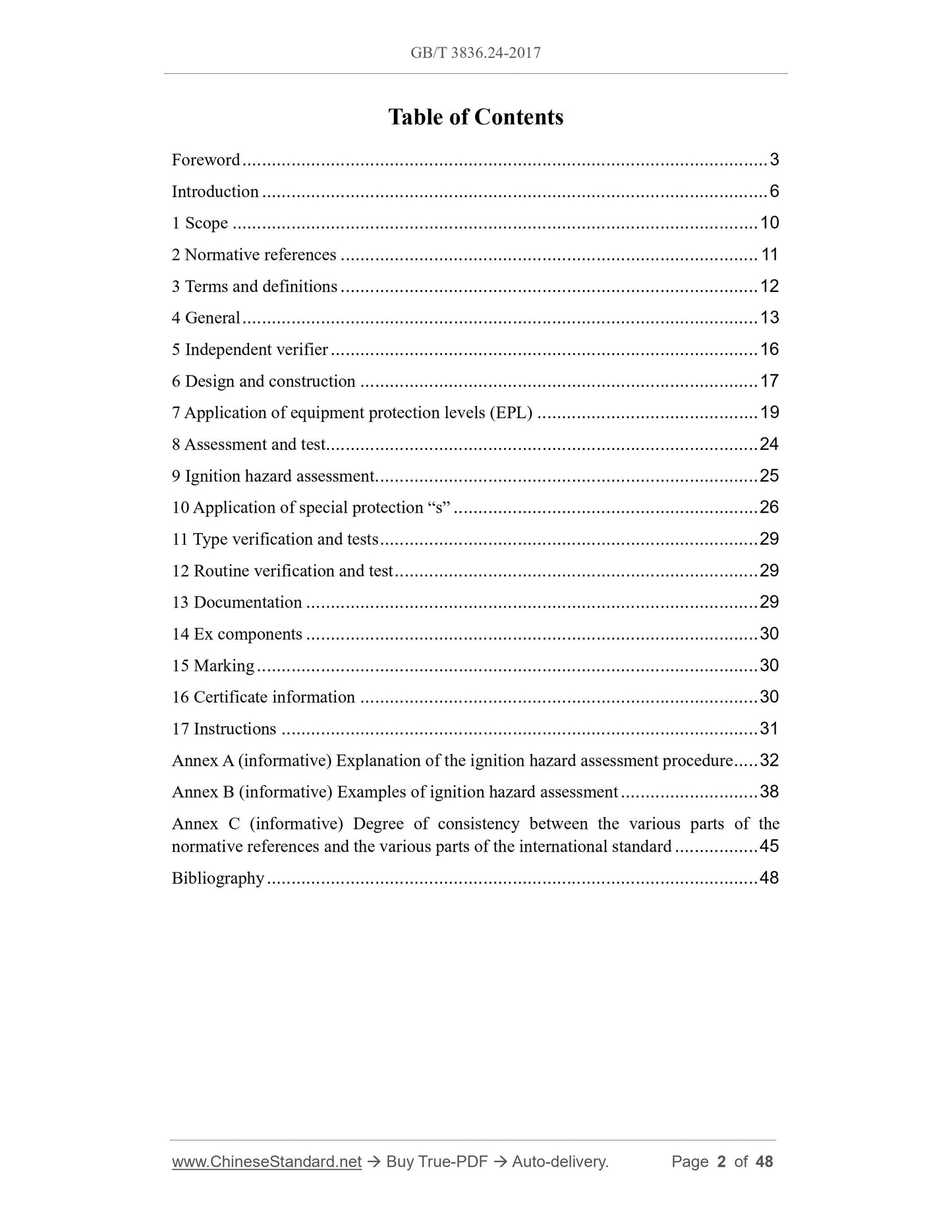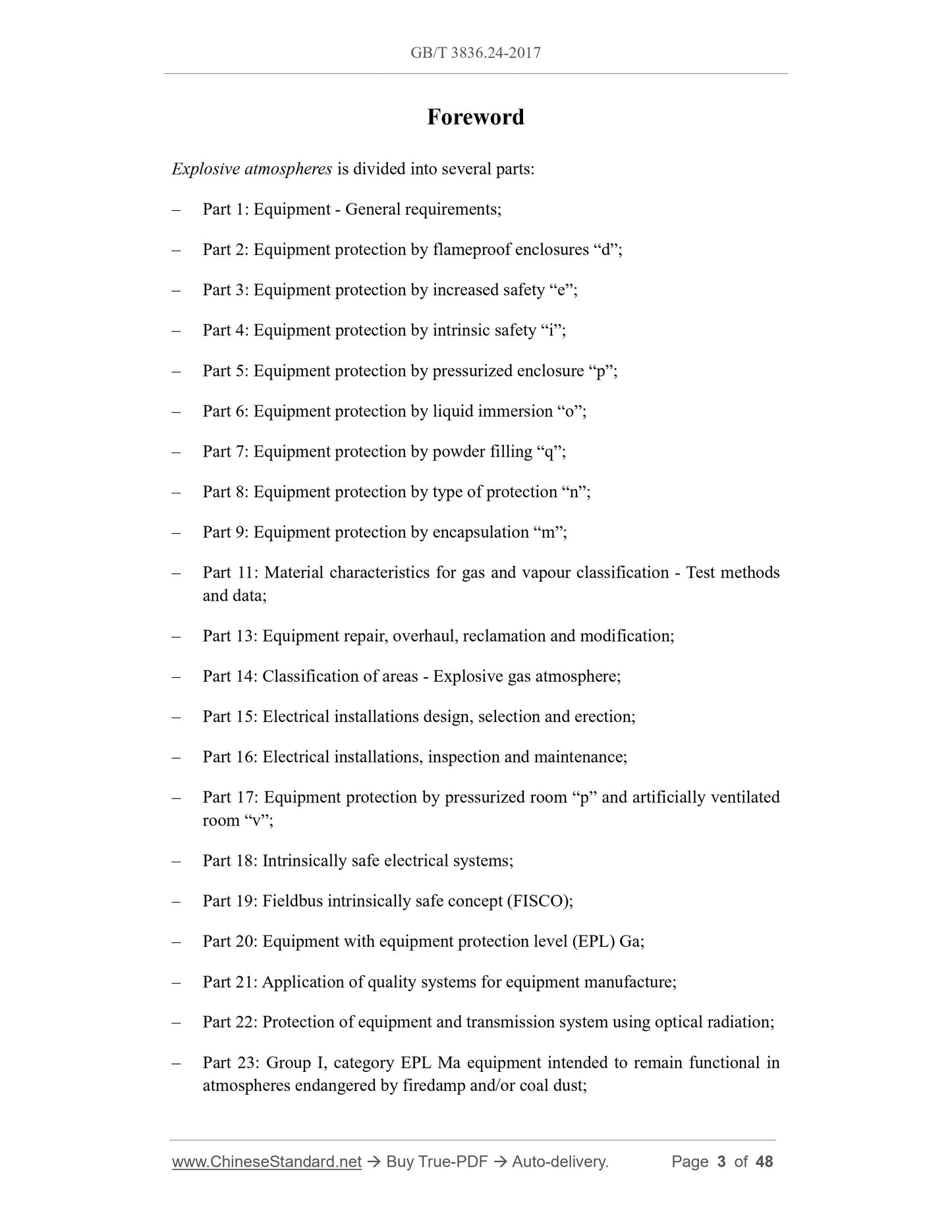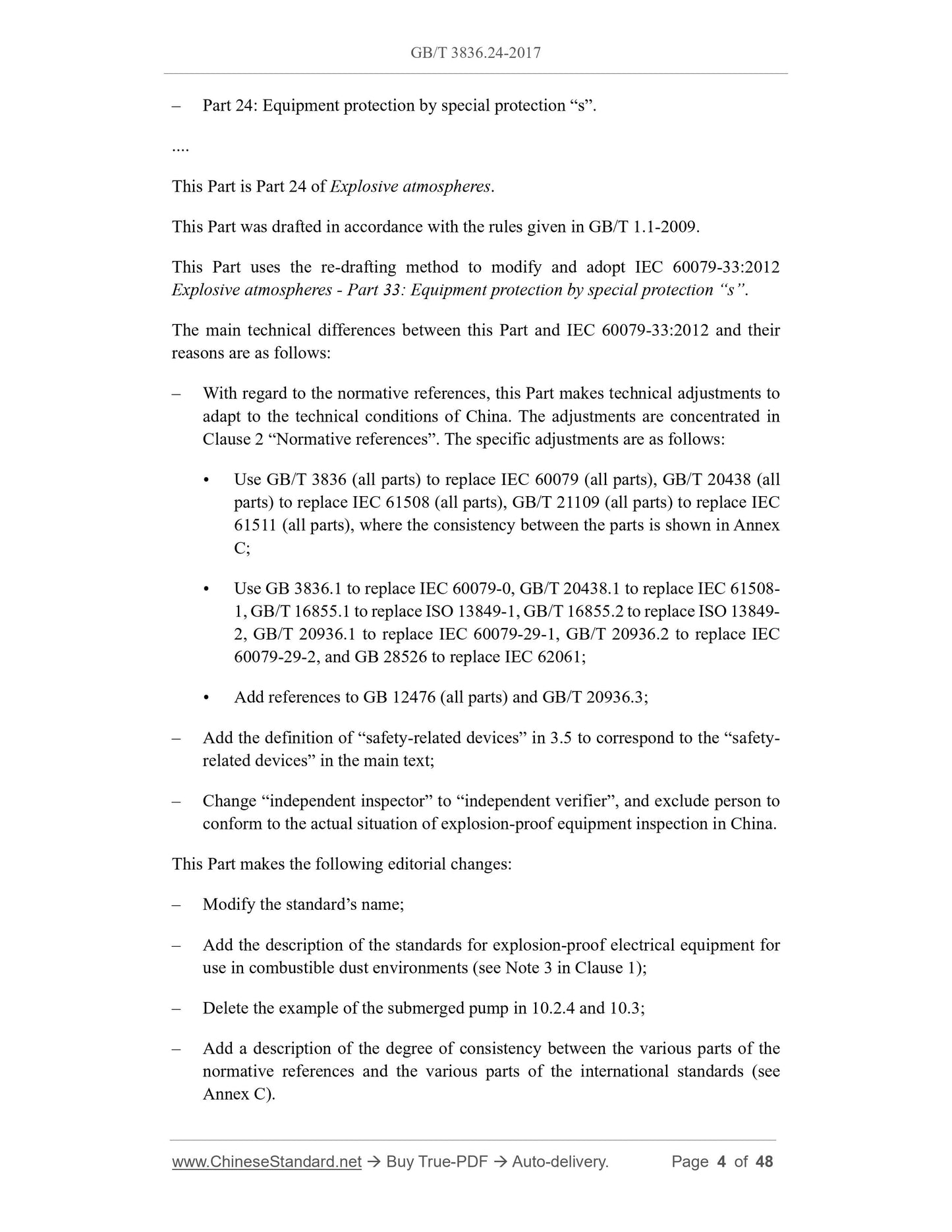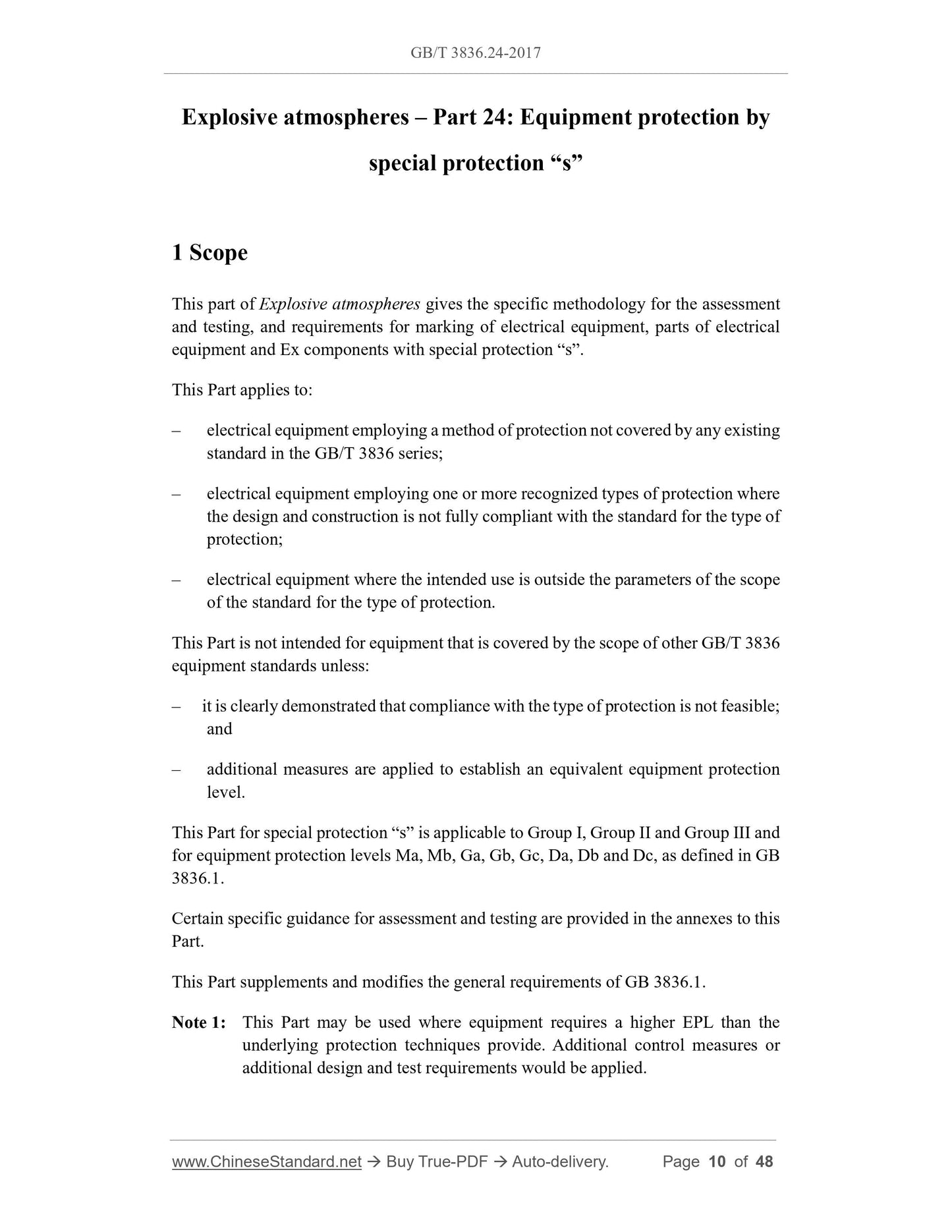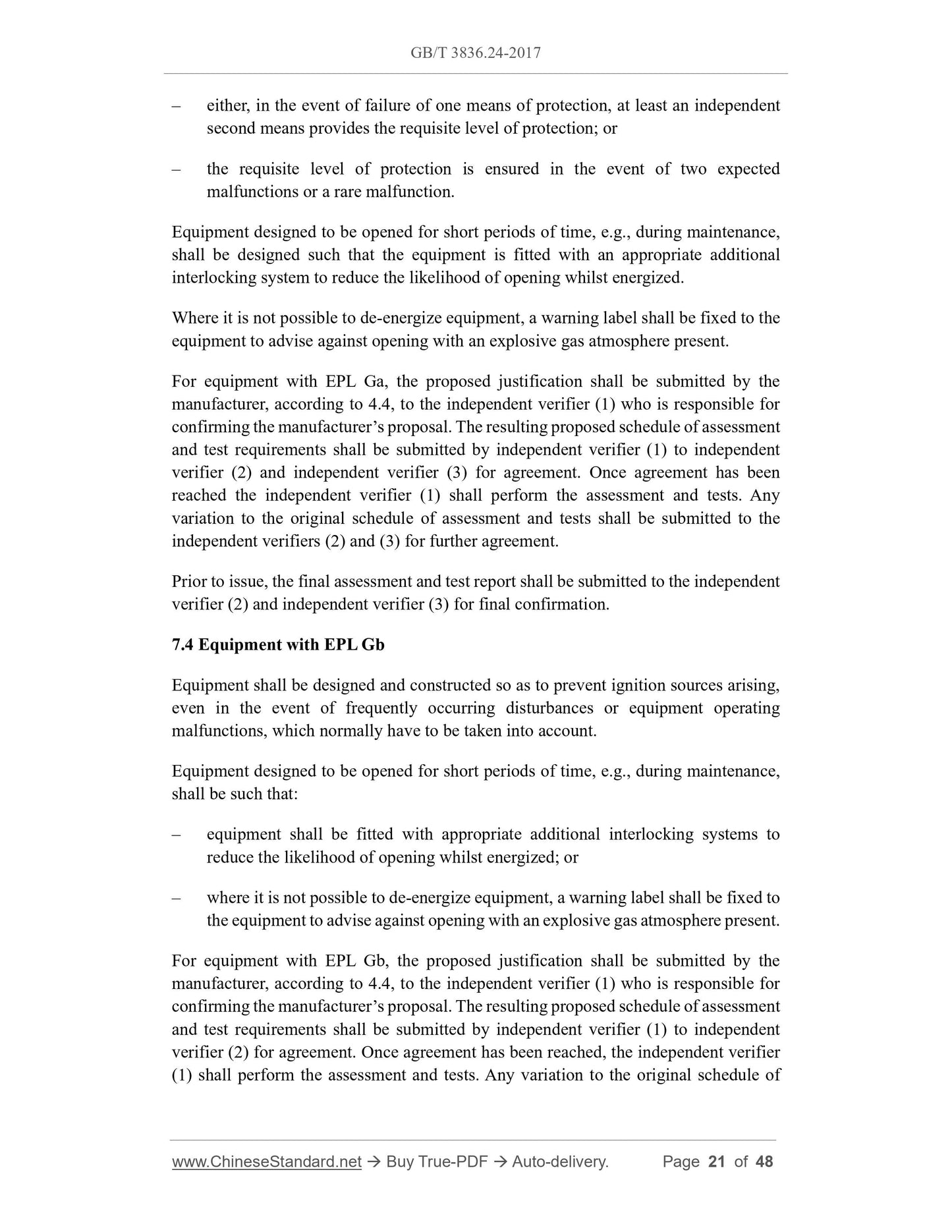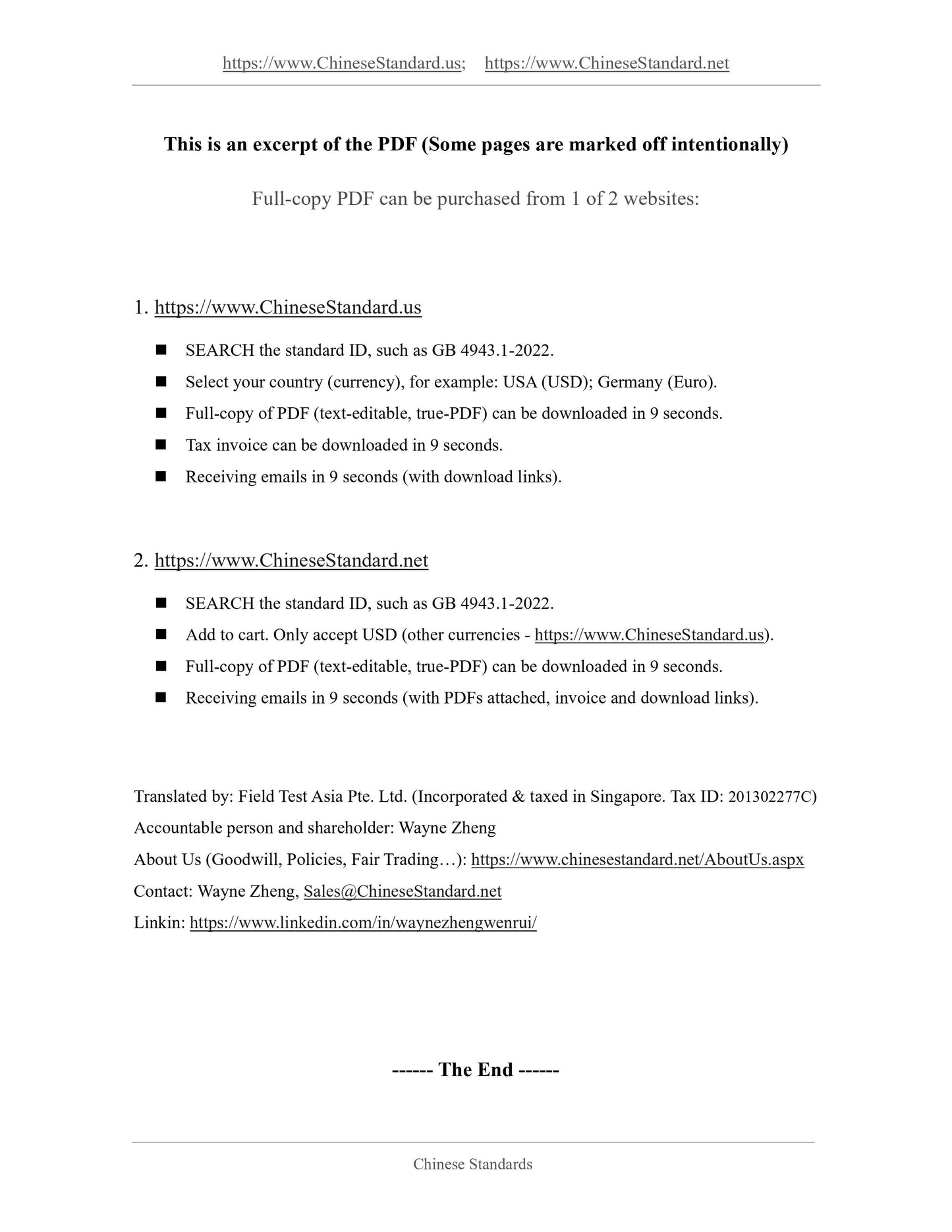1
/
of
7
www.ChineseStandard.us -- Field Test Asia Pte. Ltd.
GB/T 3836.24-2017 English PDF (GB/T3836.24-2017)
GB/T 3836.24-2017 English PDF (GB/T3836.24-2017)
Regular price
$490.00
Regular price
Sale price
$490.00
Unit price
/
per
Shipping calculated at checkout.
Couldn't load pickup availability
GB/T 3836.24-2017: Explosive atmospheres -- Part 24: Equipment protection by special protection 's'
Delivery: 9 seconds. Download (and Email) true-PDF + Invoice.Get Quotation: Click GB/T 3836.24-2017 (Self-service in 1-minute)
Newer / historical versions: GB/T 3836.24-2017
Preview True-PDF
Scope
This part of Explosive atmospheres gives the specific methodology for the assessmentand testing, and requirements for marking of electrical equipment, parts of electrical
equipment and Ex components with special protection “s”.
This Part applies to.
– electrical equipment employing a method of protection not covered by any existing
standard in the GB/T 3836 series;
– electrical equipment employing one or more recognized types of protection where
the design and construction is not fully compliant with the standard for the type of
protection;
– electrical equipment where the intended use is outside the parameters of the scope
of the standard for the type of protection.
This Part is not intended for equipment that is covered by the scope of other GB/T 3836
equipment standards unless.
– it is clearly demonstrated that compliance with the type of protection is not feasible;
and
– additional measures are applied to establish an equivalent equipment protection
level.
This Part for special protection “s” is applicable to Group I, Group II and Group III and
for equipment protection levels Ma, Mb, Ga, Gb, Gc, Da, Db and Dc, as defined in GB
3836.1.
Certain specific guidance for assessment and testing are provided in the annexes to this
Part.
This Part supplements and modifies the general requirements of GB 3836.1.
Note 1.This Part may be used where equipment requires a higher EPL than the
underlying protection techniques provide. Additional control measures or
additional design and test requirements would be applied.
– either, in the event of failure of one means of protection, at least an independent
second means provides the requisite level of protection; or
– the requisite level of protection is ensured in the event of two expected
malfunctions or a rare malfunction.
Equipment designed to be opened for short periods of time, e.g., during maintenance,
shall be designed such that the equipment is fitted with an appropriate additional
interlocking system to reduce the likelihood of opening whilst energized.
Where it is not possible to de-energize equipment, a warning label shall be fixed to the
equipment to advise against opening with an explosive gas atmosphere present.
For equipment with EPL Ga, the proposed justification shall be submitted by the
manufacturer, according to 4.4, to the independent verifier (1) who is responsible for
confirming the manufacturer’s proposal. The resulting proposed schedule of assessment
and test requirements shall be submitted by independent verifier (1) to independent
verifier (2) and independent verifier (3) for agreement. Once agreement has been
reached the independent verifier (1) shall perform the assessment and tests. Any
variation to the original schedule of assessment and tests shall be submitted to the
independent verifiers (2) and (3) for further agreement.
Prior to issue, the final assessment and test report shall be submitted to the independent
verifier (2) and independent verifier (3) for final confirmation.
7.4 Equipment with EPL Gb
Equipment shall be designed and constructed so as to prevent ignition sources arising,
even in the event of frequently occurring disturbances or equipment operating
malfunctions, which normally have to be taken into account.
Equipment designed to be opened for short periods of time, e.g., during maintenance,
shall be such that.
– equipment shall be fitted with appropriate additional interlocking systems to
reduce the likelihood of opening whilst energized; or
– where it is not possible to de-energize equipment, a warning label shall be fixed to
the equipment to advise against opening with an explosive gas atmosphere present.
For equipment with EPL Gb, the proposed justification shall be submitted by the
manufacturer, according to 4.4, to the independent verifier (1) who is responsible for
confirming the manufacturer’s proposal. The resulting proposed schedule of assessment
and test requirements shall be submitted by independent verifier (1) to independent
verifier (2) for agreement. Once agreement has been reached, the independent verifier
(1) shall perform the assessment and tests. Any variation to the original schedule of
Basic Data
| Standard ID | GB/T 3836.24-2017 (GB/T3836.24-2017) |
| Description (Translated English) | Explosive atmospheres -- Part 24: Equipment protection by special protection ��s�� |
| Sector / Industry | National Standard (Recommended) |
| Classification of Chinese Standard | K35 |
| Classification of International Standard | 29.260.20 |
| Word Count Estimation | 30,342 |
| Date of Issue | 2017-12-29 |
| Date of Implementation | 2018-07-01 |
| Regulation (derived from) | National Standards Bulletin 2017 No. 32 |
| Issuing agency(ies) | General Administration of Quality Supervision, Inspection and Quarantine of the People's Republic of China, Standardization Administration of the People's Republic of China |
Share
